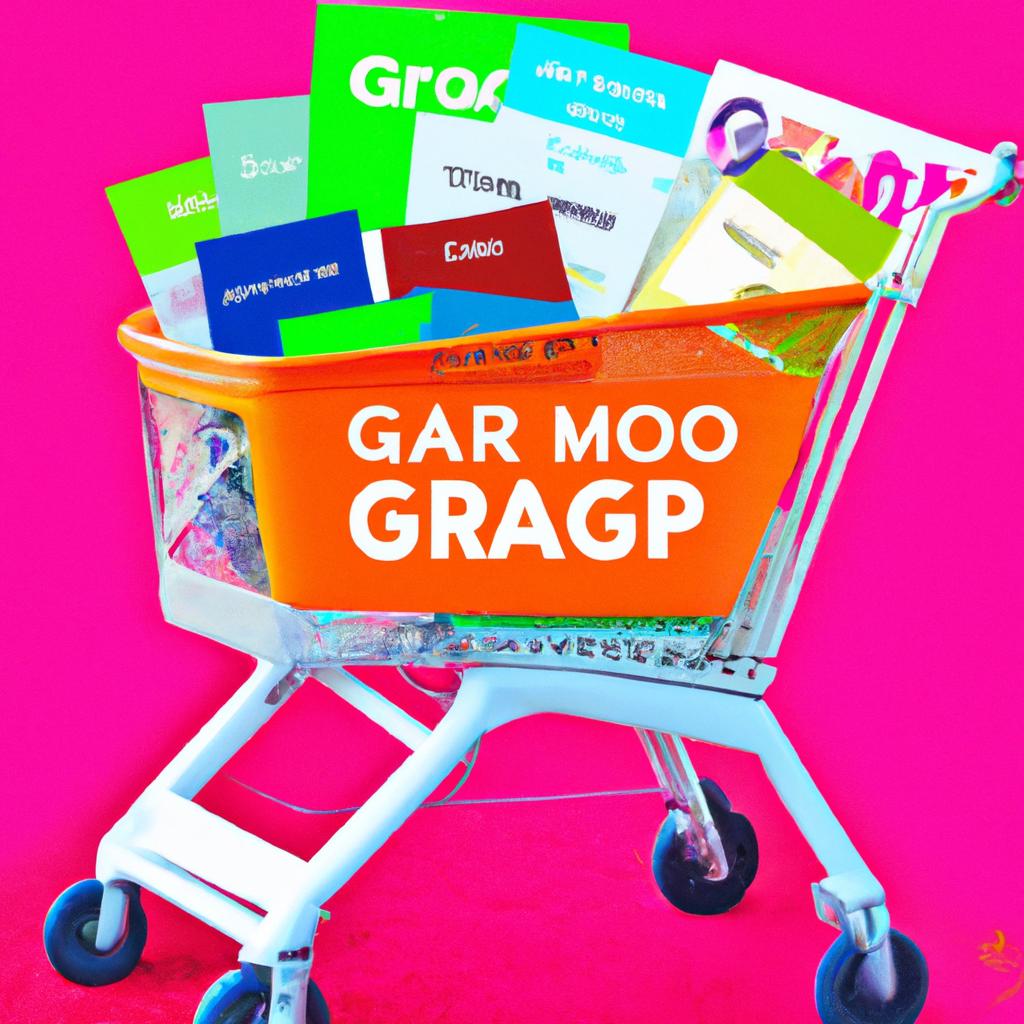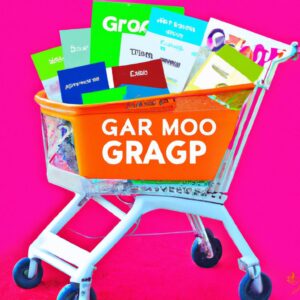Paid Advertising in Retail: Google Ads, Facebook Ads, and More
The retail industry is becoming increasingly competitive, making it important for businesses to stand out. One way of doing this is by investing in paid advertising. Paid advertising gives you the opportunity to get your message across to customers quickly and efficiently. The three main platforms that businesses use for advertising are Google Ads, Facebook Ads, and other forms of paid advertising.
Paid advertising can help retail businesses increase customer engagement and generate more revenue. By understanding how to effectively use the most popular platforms, businesses can maximize their results with minimal cost cuts. Below, we will discuss the basics of paid advertising in the retail industry, and provide you with a step-by-step guide for using Google Ads, Facebook Ads, and more.
What are Google Ads, Facebook Ads, and other forms of Paid Advertising?
Paid advertising is the process of paying for a spot to promote your product, service, or business on a platform. The most popular paid advertising platforms are Google Ads and Facebook Ads, where you can create campaigns for your target audience to view.
Google Ads is a pay-per-click (PPC) advertising system that lets businesses advertise on the search engine results page (SERP). With Google Ads, businesses can create targeted ads that appear when a user searches for terms related to their product or service.
Facebook Ads is a platform that enables businesses to create sponsored posts and stories to appear in users’ news feeds. Businesses can choose who sees their ads based on factors like age, location, interests, and more.
Other forms of paid advertising include native advertising, display advertising (banners), video advertising, email marketing, lead generation, influencer marketing, and more.
Benefits of Paid Advertising for Retail Businesses
For retail businesses, paid advertising can be a powerful tool to increase customer engagement and revenue. It can be used to reach new customers, boost brand awareness, and increase sales. Additionally, paid campaigns can be highly targeted and tailored to the specific needs and interests of each business’s desired demographic.
Here are some of the key benefits of using paid advertising:
- Reach new potential customers
- Boost brand recognition and awareness
- Increase sales and revenue
- Target specific audiences based on interests and preferences
- Test different messages and campaigns quickly
- Easily track and measure campaign performance
Step-by-Step Guide for Paid Advertising
When it comes to running paid campaigns for retail businesses, it’s important to have a well-thought-out plan in place. The step-by-step guide below outlines the key steps for setting up and optimizing campaigns on Google Ads, Facebook Ads, and other platforms.
- Set Your Goals: Define your campaign objectives before you launch any campaigns. This could include increasing website traffic, growing sales, building brand awareness, etc.
- Choose Your Platforms: Decide which platforms you’ll be using for your campaigns (Google Ads, Facebook Ads, etc.). Consider your budget, target audience, and campaign goals when making this decision.
- Create Your Campaigns: When creating campaigns, follow best practices for each platform including ad copy, targeting, bidding, and optimization rules.
- Launch & Monitor: Once campaigns are ready, launch them and actively monitor them. Make adjustments as needed based on performance.
- Test & Optimize: Experiment with different ad copy, images, and targeting criteria to increase campaign performance.
By following these essential steps for setting up and optimizing campaigns, you can ensure that you’re getting the most out of your paid advertising efforts.
Considering Ops Cuts
Running paid campaigns on Google Ads, Facebook Ads, and other platforms can be expensive – especially for a retail business. To maximize the return on your investment while lowering costs, it is important to consider different operations cuts and strategies.
A few strategies that could help you reduce costs while maximizing results include:
- Optimizing your bids
- Utilizing competitor research
- Creating A/B ad tests
- Developing retargeting campaigns
- Using daily budgets strategically
By carefully considering these strategies, you can make the most of your advertising budget – while continuing to grow your business.
Tips & Tricks for Running Paid Advertising Campaigns
Paid advertising is a great way to maximize your reach, increase customer engagement and drive sales. As a retail business, you’ll want to ensure that you’re using platforms such as Google Ads, Facebook Ads and more in the most effective way possible. Here are a few tips and tricks to help you get started:
- Always have a clear goal in mind when running an advertising campaign.
- Target the right audience with detailed targeting options.
- Create compelling ad copy and visuals that will capture attention.
- Make sure you understand platform specific metrics such as clicks, impressions, and conversions.
- Keep an eye on your budget to ensure that you don’t overspend.
- Test different strategies to find out what works best for your business.
- Analyze your campaigns and make adjustments as necessary.
- Study industry trends to stay ahead of the curve.
With these tips and tricks, you can achieve success with your paid advertising campaigns. Keep in mind that paid advertising isn’t a “set it and forget it” type of marketing strategy. You’ll need to constantly monitor, analyze, and adjust your campaigns to ensure the best results.
Tracking & Analyzing Results
When running paid campaigns, it’s essential to track and analyze the results on an ongoing basis. By doing this, you can better evaluate your campaigns and make adjustments when necessary. In order to accurately track and analyze your results, you’ll need to keep track of metrics such as impressions, clicks, conversions, and ROI.
It’s best to use a tracking tool such as Google Analytics to monitor these metrics. With Google Analytics, you can get detailed data on your campaigns, such as the number of impressions, clicks, and conversions from your ads. Additionally, you can also measure your return on investment (ROI) to help determine whether your ad campaign was successful.
By tracking and analyzing your results, you’ll be able to see what’s working well for your campaigns and what needs to be tweaked in order to increase your chances of success. It’s important to note that there is no one-size-fits-all approach when it comes to tracking and analyzing results, so make sure to tailor your methodology to suit your business’s needs.
Different Metrics
When running a paid advertising campaign, there are several key metrics you should be aware of in order to determine how effective your campaigns are performing. Impressions refer to how many times your ad is seen, clicks refer to how many people have clicked on your ad, conversions refer to how many of those clicks have turned into sales or signups, and ROI (Return On Investment) measures the profitability of your campaigns.
These metrics will help you better understand what techniques are working and where there may be some improvement that needs to be done. For example, if you have a high number of impressions but low clicks, this could indicate that your ads need to be optimized for better visibility or relevancy. Conversely, if you have a lot of clicks but not many conversions, this could suggest your ads are targeting the wrong audience or you need to improve your landing page.
By understanding the different metrics, you can gain valuable insight into how your campaigns are performing and make adjustments accordingly. This will ensure your campaigns are more effective and that you are getting the most out of your budget.
Best Practices for Optimizing Your Paid Advertising Campaigns
In order to get the most out of your paid advertising campaigns, it’s important to follow a few best practices. Here are some tips on how to optimize your campaigns for success:
- Test different formats and content to determine what resonates best with your target audience.
- Monitor campaigns regularly to ensure they’re running correctly.
- Adjust campaigns to capture changes in trends and consumer behavior.
- Run A/B tests to compare different versions of ad creatives.
- Set up automated bidding to better target customers.
- Utilize retargeting to maximize ad performance.
- Leverage third-party tools to get a more detailed view of how your campaigns are performing.
By following these best practices, you can maximize your ROI and get the most out of your paid advertising campaigns.
Common Mistakes to Avoid
When running paid campaigns on Google Ads, Facebook Ads, and other platforms, it’s important to know what mistakes to avoid. Here are some of the most common mistakes to keep in mind:
- Not using a proper budget – Setting too low of a budget or not allocating enough funds to separate campaigns can limit effectiveness.
- Poor keyword targeting – Using irrelevant or negative keywords can limit campaign performance.
- Misusing add types – Not choosing the right ad types based on the type of campaigns.
- Low quality ads – Not having high-quality graphics/images or copy can result in lost potential sales.
- Overlooking mobile optimization – Making sure that campaigns are optimized for mobile devices.
These are just a few of the mistakes to be aware of when running paid campaigns. It’s important to stay up to date with changes and new strategies. Taking the time to regularly review and optimize campaigns is key for success.
Resources & References
Having a reliable set of resources and references can be incredibly helpful when researching, planning, and executing paid campaigns. Below are some useful links and references for better understanding paid advertising in retail:
- Google Ads Guide for Retailers – A comprehensive guide to getting started with Google Ads for retail businesses.
- Facebook Ads for Retailers – A step-by-step guide to creating and optimizing Facebook Ads campaigns for retailers.
- The Hubspot Marketing Library – A collection of ebooks, guides, templates, and more all about marketing, including paid advertising.
- The Small Business Guide to Paid Advertising – A comprehensive guide to advertising your small business online.
- Digital Advertising for Dummies – A helpful book for the beginner marketer who wants to learn more about digital advertising.
Conclusion
In conclusion, paid advertising is a great way for retail businesses to maximize their reach and engagement with customers. Google Ads, Facebook Ads, and other platforms can be extremely effective in driving results, if they are used efficiently. This guide has offered an overview of these and other topics related to the subject, from outlining the benefits of paid advertising to providing step-by-step instructions and tips for optimizing campaigns. To ensure success, it is important to understand the metrics that are relevant to paid advertising and track and analyze the results of your campaigns. We hope this guide has been helpful in getting you started on your journey towards increasing your online presence and sales.
comments: 0
Warning: Trying to access array offset on value of type bool in /home/u247127553/domains/abuyinguide.com/public_html/wp-content/themes/superblog/single.php on line 44

